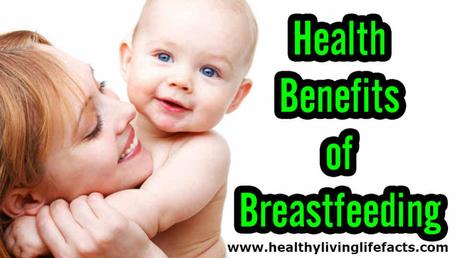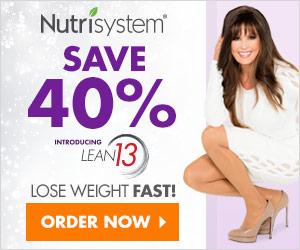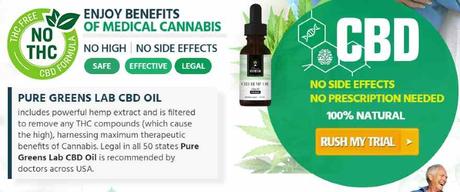What Is Breastfeeding?

Breastfeeding is the process of feeding a mother’s breast milk to her infant, usually directly from your breast or pumping out the milk from the breast and bottle-feeding it to the infant. And it’s also called nursing.
In fact, according to WHO “exclusive breastfeeding” is defined as no other food or drink, not even water, except breast milk (including milk expressed or from a wet nurse) for 6 months of life, but allows the infant to receive ORS, drops and syrups (vitamins, minerals and medicines).
Although, making the decision to breastfeed is a personal matter. But the American Academy of Pediatrics recommends that infants be exclusively breastfed for about the first 6 months with continued breastfeeding along with introducing appropriate complementary foods for 1 year or longer.
Benefits of Breastfeeding for Both Mom and Baby
Breast milk provides optimal nutrition for babies. And it has the right amount of nutrients, is easily digested and readily available.
However, the rate of breastfeeding is as low as 30% in some groups of women (1, 2). While some women are unable to breastfeed, others simply choose not to.

Yet studies show breastfeeding has major health benefits, for both the mother and her baby.
Breastfeeding Benefits
Here are science-based benefits of breastfeeding or Breastfeeding Essentials. And benefits 1–5 are for babies, but 6–11 are for mothers.
1. Breast Milk Provides Ideal Nutrition for Babies
Most health authorities recommend exclusive breastfeeding for at least 6 months. And continued breastfeeding is then recommended for at least one year, as different foods are introduced into the baby’s diet (3).

And breast milk contains everything the baby needs for the first six months of life, in all the right proportions. Its composition even changes according to the baby’s changing needs, especially during the first month of life (4).
During the first days after birth, the breasts produce a thick and yellowish fluid called colostrum. It’s high in protein, low in sugar and loaded with beneficial compounds (5).
Colostrum is the ideal first milk and helps the newborn’s immature digestive tract develop. After the first few days, the breasts start producing larger amounts of milk as the baby’s stomach grows.
Breast-feeding Your Child Beyond Infancy.

About the only thing that may be lacking from breast milk is vitamin D. Unless the mother has a very high intake, her breast milk will not provide enough (6, 7).
To compensate for this deficiency, vitamin D drops are usually recommended from the age of 2–4 weeks (8).
BOTTOM LINE: BREAST MILK CONTAINS EVERYTHING YOUR BABY NEEDS FOR THE FIRST SIX MONTHS OF LIFE, WITH THE POSSIBLE EXCEPTION OF VITAMIN D. THE FIRST MILK IS THICK, RICH IN PROTEIN AND LOADED WITH BENEFICIAL COMPOUNDS.
2. Breast Milk Contains Important Antibodies
Breast milk is loaded with antibodies that help your baby fight off viruses and bacteria.
This particularly applies to colostrum, the first milk.
Colostrum provides high amounts of immunoglobulin A (IgA), as well as several other antibodies (9).
When the mother is exposed to viruses or bacteria, she starts producing antibodies.
These antibodies are then secreted into the breast milk and passed to the baby during feeding (10).
IgA protects the baby from getting sick by forming a protective layer in the baby’s nose, throat and digestive system (11, 12, 13).
For this reason, breastfeeding mothers with the flu may actually provide their babies with antibodies that help them fight the pathogen that is causing the sickness.
Nonetheless, if you are ill, you should always practice strict hygiene. Wash your hands often and try to avoid infecting your baby.
Formula doesn’t provide antibody protection for babies. Numerous studies show that babies who are not breastfed are more vulnerable to health issues like pneumonia, diarrhea and infection (14, 15, 16).
Pure CBD Oil,Miracle Drop!

BOTTOM LINE: BREAST MILK IS LOADED WITH ANTIBODIES, ESPECIALLY IMMUNOGLOBIN A, WHICH CAN HELP PREVENT OR FIGHT ILLNESS IN YOUR BABY.
3. Breastfeeding May Reduce Disease Risk
Breastfeeding has an impressive list of health benefits. This is particularly true of exclusive breastfeeding, meaning that the infant receives only breast milk.
It may reduce your baby’s risk of many illnesses and diseases, including:
- Middle ear infections: 3 or more months of exclusive breastfeeding may reduce the risk by 50%, while any breastfeeding may reduce it by 23% (17, 18).
- Respiratory tract infections: Exclusive breastfeeding for more than 4 months reduces the risk of hospitalization for these infections by up to 72% (18, 19).
- Colds and infections: Babies exclusively breastfed for 6 months may have up to a 63% lower risk of getting serious colds and ear or throat infections (17).
- Gut infections: Breastfeeding is linked with a 64% reduction in gut infections, seen for up to 2 months after breastfeeding stops (18, 19, 20).
- Intestinal tissue damage: Feeding preterm babies breast milk is linked with around a 60% reduction in the incidence of necrotizing enterocolitis (18, 21).
- Sudden infant death syndrome (SIDS): Breastfeeding is linked to a 50% reduced risk after 1 month, and a 36% reduced risk in the first year (18, 22, 23).
- Allergic diseases: Exclusive breastfeeding for at least 3–4 months is linked with a 27–42% reduced risk of asthma, atopic dermatitis and eczema (18, 24).
- Celiac disease: Babies who are breastfed at the time of first gluten exposure have a 52% lower risk of developing celiac disease (25).
- Inflammatory bowel disease: Babies who are breastfed may be roughly 30% less likely to develop childhood inflammatory bowel disease (26, 27).
- Diabetes: Breastfeeding for at least 3 months is linked to a reduced risk of type 1 diabetes (up to 30%) and type 2 diabetes (up to 40%) (3, 28, 29).
- Childhood leukemia: Breastfeeding for 6 months or longer is linked with a 15–20% reduction in the risk of childhood leukemia (19, 30, 31, 32).
In addition to reducing the risk of many infections, breastfeeding has also been shown to significantly reduce their severity (33).
Furthermore, the protective effects of breastfeeding seem to last throughout childhood and even adulthood.
BOTTOM LINE: BREASTFEEDING MAY REDUCE YOUR BABY’S RISK OF INFECTIONS AND MANY DISEASES, INCLUDING ALLERGY, CELIAC DISEASE AND DIABETES.
4. Breast Milk Promotes a Healthy Weight

Breastfeeding promotes healthy weight gain and helps prevent childhood obesity.
Studies show that obesity rates are 15–30% lower in breastfed babies, compared to formula-fed babies (34, 35, 36, 37).
The duration is also important, as each month of breastfeeding reduces your child’s risk of future obesity by 4% (19).
This may be due to the development of different gut bacteria. Breastfed babies have higher amounts of beneficial gut bacteria, which may affect fat storage (38).
Babies fed on breast milk also have more leptin in their systems than formula-fed babies. Leptin is a key hormone for regulating appetite and fat storage (39, 40).
Breastfed babies also self-regulate their milk intake. They’re better at eating only until they’ve satisfied their hunger, which helps them develop healthy eating patterns (41).
BOTTOM LINE: BREASTFED BABIES HAVE LOWER OBESITY RATES THAN FORMULA-FED BABIES. THEY ALSO HAVE MORE LEPTIN AND MORE BENEFICIAL GUT BACTERIA.
5. Breastfeeding May Make Children Smarter
Some studies suggest there may be a difference in brain development between breastfed and formula-fed babies (3).
This difference may be due to the physical intimacy, touch and eye contact associated with breastfeeding.
Studies indicate that breastfed babies have higher intelligence scores and are less likely to develop problems with behavior and learning as they grow older (42, 43, 44).
However, the most pronounced effects are seen in preterm babies, who have a higher risk of developmental issues.
The research clearly shows that breastfeeding has significant positive effects on their long-term brain development (45, 46, 47, 48).
BOTTOM LINE: BREASTFEEDING MAY AFFECT YOUR BABY’S BRAIN DEVELOPMENT AND REDUCE THE RISK OF FUTURE BEHAVIOR AND LEARNING PROBLEMS.
6. Breastfeeding May Help You Lose Weight
While some women seem to gain weight during breastfeeding, others seem to effortlessly lose weight.
Although breastfeeding increases a mother’s energy demands by about 500 calories per day, the body’s hormonal balance is very different from normal (49, 50, 51).
Because of these hormonal changes, lactating women have an increased appetite and may be more prone to storing fat for milk production (52, 53, 54).
For the first 3 months after delivery, breastfeeding mothers may lose less weight than women who don’t breastfeed, and they may even gain weight (55).
However, after 3 months of lactation, they will likely experience an increase in fat burning (56, 57, 58).
Beginning around 3–6 months after delivery, mothers who breastfeed have been shown to lose more weight than mothers who don’t breastfeed (59, 60, 61, 62, 63).
The important thing to remember is that diet and exercise are still the most important factors determining how much weight you will lose, whether lactating or not (55, 64).
BOTTOM LINE: BREASTFEEDING MAY MAKE WEIGHT LOSS HARDER FOR THE FIRST 3 MONTHS AFTER DELIVERY. HOWEVER, IT MAY ACTUALLY HELP WITH WEIGHT LOSS AFTER THE FIRST 3 MONTHS.
7. Breastfeeding Helps the Uterus Contract
During pregnancy, your uterus grows immensely, expanding from the size of a pear to filling almost the entire space of your abdomen.
After delivery, your uterus goes through a process called involution, which helps it return to its previous size. Oxytocin, a hormone that increases throughout pregnancy, helps drive this process.
Your body secretes high amounts of oxytocin during labor to help deliver the baby and reduce bleeding (65, 66).
Oxytocin also increases during breastfeeding. It encourages uterine contractions and reduces bleeding, helping the uterus return to its previous size.
Studies have also shown that mothers who breastfeed generally have less blood loss after delivery and faster involution of the uterus (3, 67).
BOTTOM LINE: BREASTFEEDING INCREASES OXYTOCIN PRODUCTION, A HORMONE THAT CAUSES CONTRACTIONS IN THE UTERUS. IT REDUCES BLOOD LOSS AFTER DELIVERY AND HELPS THE UTERUS RETURN TO ITS PREVIOUS SMALLER SIZE.
8. Mothers Who Breastfeed Have a Lower Risk of Depression
Postpartum depression is a type of depression that can develop shortly after childbirth. It affects up to 15% of mothers (68).
Women who breastfeed seem less likely to develop postpartum depression, compared to mothers who wean early or do not breastfeed (69, 70).
However, those who experience postpartum depression early after delivery are also more likely to have trouble breastfeeding and do so for a shorter duration (71, 72).
Although the evidence is a bit mixed, it’s known that breastfeeding causes hormonal changes that encourage maternal caregiving and bonding (73).
One of the most pronounced changes is the increased amount of oxytocin produced during birth and breastfeeding (74).
Oxytocin appears to have long-term anti-anxiety effects. It also encourages bonding by affecting specific brain regions that promote nurturing and relaxation (75, 76).
These effects may also partly explain why breastfeeding mothers have a lower rate of maternal neglect, compared to those who do not breastfeed.
One study found that the rate of maternal child abuse and neglect was almost three times higher for mothers who did not breastfeed, compared to those who did (77).
On that note, keep in mind that these are only statistical associations. Not breastfeeding does not mean that you will neglect your baby in any way.
BOTTOM LINE: BREASTFEEDING MOTHERS ARE LESS LIKELY TO DEVELOP POSTPARTUM DEPRESSION. THEY HAVE INCREASED AMOUNTS OF OXYTOCIN IN THEIR SYSTEM, WHICH ENCOURAGES CAREGIVING, RELAXATION AND BONDING BETWEEN MOTHER AND CHILD.
9. Breastfeeding Reduces Your Disease Risk
Breastfeeding seems to provide the mother with long-term protection against cancer and several diseases.
The total time a woman spends breastfeeding is linked with a reduced risk of breast and ovarian cancer (18, 19, 78).
In fact, women who breastfeed for more than 12 months during their lifetime have a 28% lower risk of both breast and ovarian cancer. Each year of breastfeeding is associated with a 4.3% decrease in breast cancer risk (79, 80).
Recent studies also indicate that breastfeeding may protect against metabolic syndrome, a group of conditions that increase the risk of heart disease and other health problems (14, 81, 82, 83).
Women who breastfeed for 1–2 years over their lifetime have a 10–50% lower risk of high blood pressure, arthritis, high blood fats, heart disease and type 2 diabetes (3).
BOTTOM LINE: BREASTFEEDING FOR MORE THAN ONE YEAR IS LINKED TO A 28% LOWER RISK OF BREAST AND OVARIAN CANCER. IT HAS ALSO BEEN LINKED TO A REDUCED RISK OF SEVERAL OTHER DISEASES.
10. Breastfeeding May Prevent Menstruation
Continued breastfeeding also pauses ovulation and menstruation.
The suspension of menstrual cycles may actually be nature’s way of ensuring there is some time between pregnancies.
Some women have even used this phenomenon as birth control for the first few months after delivery (84, 85).
However, note that this may not be a completely effective method of birth control.
You may consider this change as an extra benefit. While you’re enjoying precious time with your newborn, you won’t have to worry about “that time of the month.”
BOTTOM LINE: REGULAR BREASTFEEDING PAUSES OVULATION AND MENSTRUATION. SOME HAVE USED THIS AS BIRTH CONTROL, BUT IT MAY NOT BE COMPLETELY EFFECTIVE.
11. It Also Saves Time and Money
To top the list, breastfeeding is completely free and requires very little effort.
By choosing to breastfeed, you won’t have to:
- Spend money on formula.
- Calculate how much your baby needs to drink daily.
- Spend time cleaning and sterilizing bottles.
- Mix and warm up bottles in the middle of the night (or day).
- Figure out ways to warm up bottles while on the go.
Breast milk is always at the right temperature and ready to drink.
BOTTOM LINE: BY BREASTFEEDING, YOU DON’T HAVE TO WORRY ABOUT BUYING OR MIXING FORMULA, WARMING UP BOTTLES OR CALCULATING YOUR BABY’S DAILY NEEDS.
Breastfeeding Problems
The nipples may not be the best shape for feeding because of health reasons. But, most breastfeeding problems come about because women don’t recognize problems when they start to emerge.
So, it’s very to seek for help early as a best way to avoid some of the more serious breastfeeding issues. Although, discovering the problems early can be tricky since sore nipples are usually an inevitable part of learning how to breastfeed; aches and pains associated with mastitis might be confused with the tiredness of being a new mother.
And it’s highly recommended that you consult a doctor, preferably a lactation consultant; a maternal and child health worker.
Also, the common breastfeeding problems are as follows:
- Sore or cracked nipples.
- Not enough breast milk.
- Breast engorgement.
- Baby is not latching on properly.
- Too much breast milk.
- Breastfeeding and thrush.
- Blocked milk duct.
- Mastitis.
Take Home Message
If you are unable to breastfeed, then feeding your baby with formula is still completely fine. It will provide your baby with all the nutrients he or she needs.
However, breast milk also contains antibodies and other elements that protect your baby from illness and chronic disease.
Additionally, mothers who breastfeed experience their own benefits, such as convenience and reduced stress.
As an added bonus, breastfeeding gives you a valid reason to sit down, put your feet up and relax while you bond with your precious newborn.
